The name of the Indonesian island Flores in the Sunda Archipelago, translated from Portuguese, means "flowers." However, it is not famous for its blooming landscapes, but for its giant monitor lizards and volcanoes.
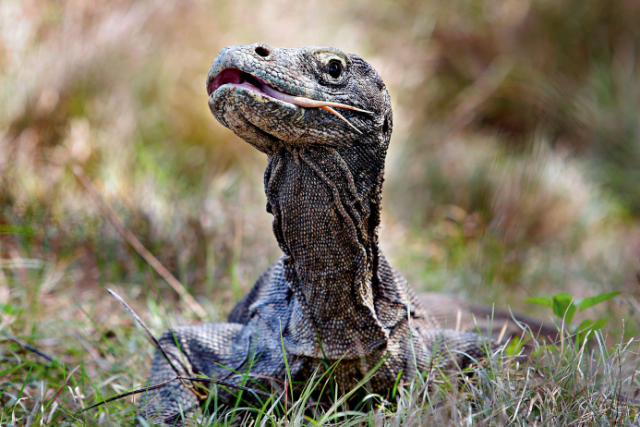
The mouth of a monitor lizard, frozen with its head raised in the tall grass five meters away from us, is partially open, and its tongue vibrates menacingly.
But Yanto, a young warden of the national park on Rinka Island, remains completely calm. "This lizard is at least thirty years old," he explains. "It's already too old to hunt and feeds only on carrion." And if the female monitor lizard still decides to attack humans, Yanto assures us he can easily fend her off with his staff.
This monitor lizard is already the sixth or seventh large reptile we've encountered on our path. "Sometimes you can see monitor lizards, sometimes you can't. This is the wild nature, not a zoo," Yanto warned us before the hike. So, we are very lucky.
***
Komodo dragons are found not only on the island that gave them their name but also on Flores and other small islands of the Lesser Sunda group along the coasts of Indonesia. These are the largest land-dwelling lizards, reaching up to three meters in length and weighing up to 70 kilograms.
***
We're walking through a marshy lowland with dense undergrowth. Suddenly, a small monitor lizard swiftly climbs up the trunk of one of the palms. "About forty centimeters," estimates Yanto. "So, it's about three or four months old." The warden is surprised: he has been working in Komodo National Park for three years, but this is the first time he's seen such a young monitor lizard. Young monitor lizards live exclusively in trees, as older members of their species would immediately devour them on the ground.
The day, needless to say, is truly fortunate. In the morning, we set out on a wooden boat from the port city of Labuan Bajo on Flores Island, heading for Rinka Island, where the monitor lizards inhabit. The places are so beautiful that one has to restrain themselves from exclaiming at the sight of each new islet, "What a beach!" Playing Robinson Crusoe here is possible for whole days: on the gleaming white sandbar where we dropped anchor for a swim, there wasn't a soul in sight.
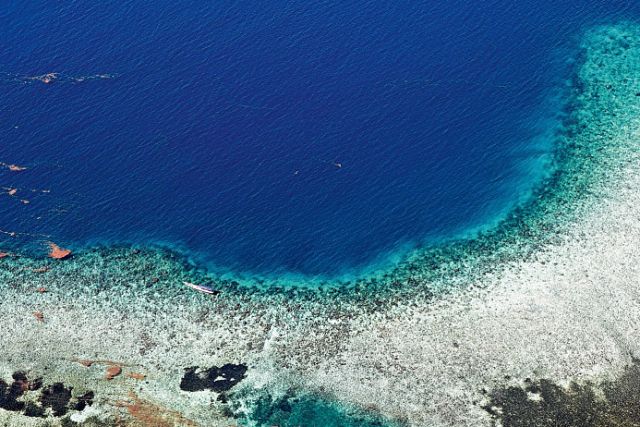
Returning to Labuan Bajo in the evening, the tourist center of Flores, the next day we head east.
"The 'Trans-Flores Highway' stretches for 360 kilometers from west to east and connects all major settlements on the island," confidently states our guide and translator, Dwi. "Our travel route will be along this highway."
"And where is this highway?" we inquire, having driven a couple of kilometers on a strip of asphalt no wider than a country road.
"We're on it," Dwi replies nonchalantly.
After half an hour, the winding ascent into the mountains begins. From the car window, all that's visible are shrub-lined shoulders. A brightly colored truck decorated in garish hues comes towards us, blasting Asian pop music from its cabin. Such vehicles are called "buses" here, as they indeed transport passengers, seated on wooden benches in the cargo bed. With every encounter, our driver Manto has to reverse to give way. Sections of the road frequently turn into a mixture of sand and gravel due to ongoing repairs. On other parts of the highway that clearly haven't been maintained for many years, we find ourselves shaking on potholes and maneuvering around ruts.
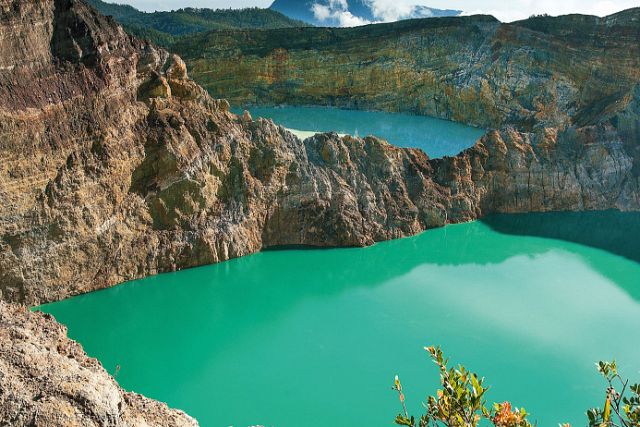
As a result, we cover fifty kilometers in four hours—our journey increasingly resembles a slow-motion sequence. In the rice plantations, farmers guide water buffalo in circles. Young rice shoots vividly green the submerged fields. Groups of children walk along the road carrying bundles of firewood, cheerfully shouting to us, "Hello, mister! Photo?"
Finally, we turn off the highway and come to a stop. The village of Waeribo, our destination, is nestled in the jungle at an altitude of 1100 meters above sea level. It can only be reached on foot, by hiking nearly six kilometers uphill on a mountain trail. Giant trees emerge from the mist, reminiscent of those seen in the fantastic movie "Avatar."
Across a gorge where a landslide tumbled an entire slope into the valley, a shaky bamboo bridge stretches. The trail takes a sharp turn, and unexpectedly, a view of seven round huts amidst the clearing unfolds, resembling gigantic pointed straw hats. In the 1990s, anthropologist Catherine Allerton from the UK, who spent a year and a half in this village, discovered that Waeribo has stood in this spot for over a thousand years.
***
At first glance, everything looks as if from the Stone Age. In front of the huts, women pound coffee beans in mortars with long wooden pestles, while small children are tied to the backs of the village women.
***
Our guide Dwi says we need to go to the largest hut. There, three elderly men greet us ceremoniously—everything feels quite official. Behind them, in semi-darkness, an open fire smolders, constructed from three stones. Women sit around the fire, cutting vegetables and adding twigs to the flames. Drums and gongs hang from supports and crossbeams. One of the huts is set up as a guesthouse: that's where we'll spend the night. On the smooth wooden floor, mattresses woven from banana leaves and stuffed with palm fibers are spread out. They are very comfortable to sleep on. The hut's roof is supported by rafters fitted together with astonishing precision, without visible gaps, and secured with ropes.
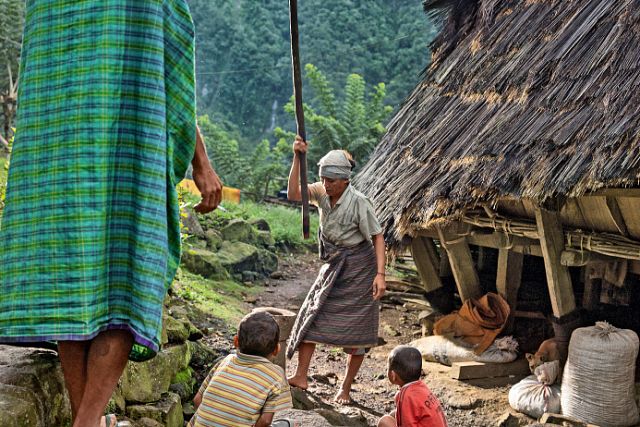
Nevertheless, this archaic world hasn't been untouched by the achievements of civilization—quite the opposite! Just a few years ago, these enormous huts were slowly decaying. The Indonesian government planned to demolish them and resettle the inhabitants—citing "hygiene reasons." But then there was a change in political direction. Suddenly, government officials recognized the cultural value of the settlement and its "touristic potential," investing substantial funds into the restoration of the huts. They even invited architects from Jakarta to ensure the renovated dwellings appeared as authentic as possible.
In a similar tourist destination in Bali, a road would undoubtedly have been built. The contrast with Bali is striking: both islands feature similar rice plantations, volcanic mountains, rainforests, and numerous beautiful beaches. However, Bali is a globally recognized tourist brand, while Flores remains a blank spot on the map despite its colorful name. Bali attracts millions of tourists, whereas Flores receives no more than ten thousand visitors a year.
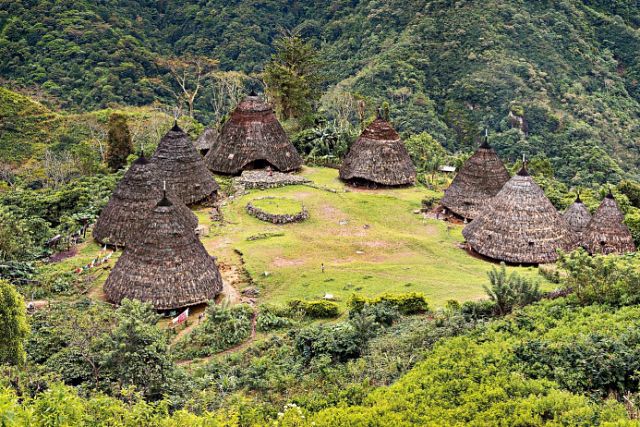
Perhaps it's all about culture? In Bali, where 90 percent of the population practices Hinduism, there's everything a typical Western downsizer might want: intricate temples, exotic holidays, and ecstatic rituals. Flores is also a religious enclave, but here, Catholicism is practiced. Christianity (as well as the island's name) was brought by Portuguese colonizers. Yet, the bell towers of Catholic churches are quite different from what European escapists might desire, especially when surrounded by palm trees.
***
Vaturaka, a village at the foot of Mount Kelimutu in the eastern part of Flores, like all settlements here, resembles a branch of paradise. It's surrounded by rice fields and fertile black soils, with streams flowing down the mountainside, forming waterfalls. In Vaturaka, there's not a single meter of paved road. Women fetch water from the nearest pipe with a tap sticking out of the ground. Or they send children with a cart and plastic jugs.
***
Slightly better off are Papa Blasius and Mama Petronella (‘Papa’ and ‘Mama’ are respectful terms here, akin to ‘sir’ and ‘madam’), who have their own guesthouse in the village. A small room with a wide bed, a chair, and a ceiling-mounted lamp. The bathroom is open-air and consists of two stone enclosures. On the left, there's a water tank and buckets for washing, while on the right, there's a toilet with manual flushing.
Mama Petronella hands us sarongs, headbands, and belts. "For the welcome ceremony," she explains. A guest who receives a formal reception should be dressed properly. Could we possibly skip all these ceremonies? Dwi looks at us in surprise: receiving guests without the ceremonial ritual is the same as insulting them.
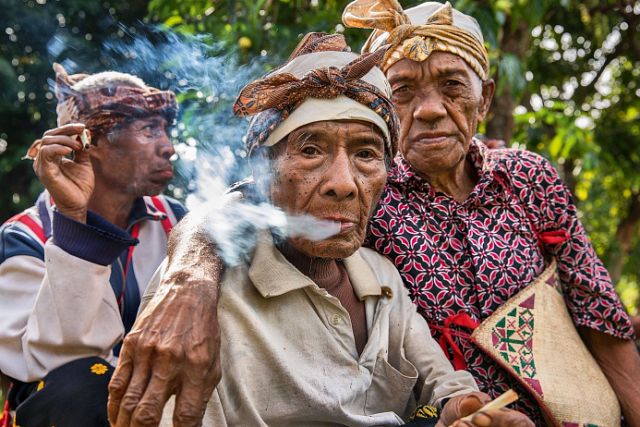
Ceremony – a word we hear as often as "Hello, mister." That's what they call everything here on Flores, whether it's a harvest festival, a birthday feast, a wedding, or a memorial. Even laying the foundation or building a new house. All the houses in a clan's settlement are constructed collaboratively.
The first ceremony takes place during the foundation laying. The second, when the posts are erected and the floor is laid. Another follows when the supporting beams are fixed. The fourth is conducted when the roof is put on. And finally, the last one when the family moves into the house.
At each celebration, two water buffalo and several pigs are sacrificed, and then the entire community is treated with their meat. During the ceremony, the homeowner must contribute no less than 120 million rupiahs (about 8000 euros) – a considerable sum for a farmer cultivating rice or coffee. But losing face is strictly avoided, as reputation is at stake.
***
The blood of the sacrificed animals appeases the ancestors. "But you're Christians, right?" we inquire. "You celebrate Christmas and Easter, don't you?" Everyone laughs. "Of course! First, we go to church, and then we hold the ceremony."
***
The ancestors of the village of Vaturaka "reside" up above on Mount Kelimutu, the second main attraction of Flores after the komodo dragons. Kelimutu hasn't erupted in a long time, but inside the volcano, everything is bubbling – it fully lives up to its name, which translates as "boiling mountain." At the summit of the volcano, there are three crater lakes that change color every few years. Water leaches various minerals from the rocky formations, causing the lakes to shimmer in shades of emerald, blue, yellow, black, or red.
The view from Kelimutu is especially stunning early in the morning when the sun rises. Mountain ridges appear on the horizon, and sunlight pierces through fog and wisps of clouds, gradually dispersing them. Local residents claim that in these moments, the island of Flores is born anew. They also believe that the souls of their deceased relatives inhabit the lakes. In Flores' afterlife, souls are divided into three groups: the first lake is for the young departed, the second for those who died in old age, and the third is for not-so-nice people.
From Vaturaka, we continue along the same "Trans-Flores Highway" towards the port town of Riung on the northern coast. The mountains become steeper, the road turns into a serpentine path. Suddenly, a stop on a bridge – there's no way forward. An excavator on the hillside above the road is "carving out" rock and stone from the mountain. Giant boulders weighing several tons crash onto the road with a thunderous noise. Ahead of a thin barrier pole, hundreds of motorcyclists have already gathered, forming a long line of cars. Everyone curiously observes the earthworks. No one looks at their watches. After a while, a caterpillar grader arrives, pushes the debris to the side, and the traffic resumes.
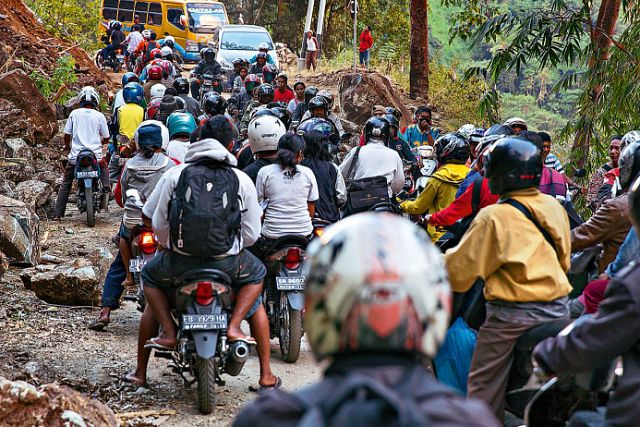
The road workers toil away in flip-flops, shorts, and without any helmets. The island's residents don't acknowledge any other type of footwear: they build houses, bridges, roads, cultivate fields, ride mopeds, and trek up the mountains wearing rubber flip-flops.
In Riung, we arrive a bit late. However, Ithann—a friendly young man with a black braid and sunglasses—dispels all our apologies with his smile. He accompanies us to the nearby islands—handfuls of hills jutting from the azure ocean, surrounded by white-fringed beaches. Ithann points out the best spots for diving. We settle on the warm sand—and then the sunset treats us to a generous dose of kitsch: in the fiery sky, clouds resembling streams of lava gather, and all of this reflects on the sea's surface.
These living picture-perfect scenes would suit a caption well: "The End."

You can add one right now!